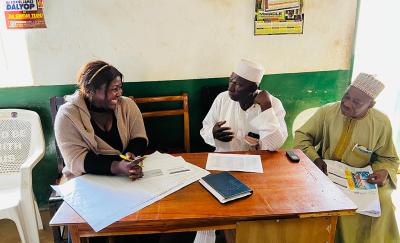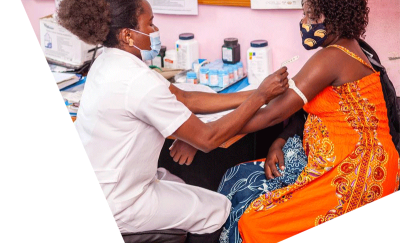

Steve is an ominous omen. A constant potential nightmare that is indicative of climate change’s impact on global health.
Steve is the name the global malaria community has given Anopheles stephensi, a species of mosquito that migrated from Asia to Africa—possibly hitchhiking on a ship or truck—with ruinous effects that reversed significant progress in the fight against malaria in several countries. Over the past three decades, the number of cases globally has declined 50 percent. But in Djibouti, for example, where Steve was detected in 2012, the number of cases rose 30-fold from 2012 to 2019.
A changing climate is one reason. Malaria in Africa had been largely in rural areas, and mosquitoes bit at night in homes. Spraying houses with insecticide and distributing bed nets—two tasks Abt has done for years—helped reduce malaria transmission.
But climate change is forcing many rural residents to move to urban areas, and Steve likes cities. This vastly increases the potential for malaria transmission. Making matters worse, Steve usually bites at dusk outside, so bed nets and spraying are less effective.
Steve has forced the U.S. President’s Malaria Initiative (PMI) and partners like Abt to alter vector control efforts. One solution is larvaciding—killing mosquitoes before they become adults. But cities have lots of cisterns, abandoned tires, and other sources of standing water where Steve can spawn. So Abt and the hundreds of entomological monitors we have trained in sub-Saharan Africa are closely watching Steve to see how much and how quickly it spreads.
Zoonotic Diseases and Environmental Factors
Steve is hardly an anomaly. At Abt, we have been assessing the degree and variety of challenges the global health security community faces as a changing climate delivers increased complexity. Of particular concern: unpredictable changes to the interactions among humans, animals, and the environment. We have begun to understand the complex relationship between climate and weather variability and incidences of emerging infectious diseases in both human and animal populations and the dynamics of these zoonotic diseases, which can transmit from animals to humans and vice versa. What’s increasingly clear is how critical this relationship is to informing our approach to disease surveillance and eradication.
Climate change is altering the distribution, reproductive rate, and behavior of vectors such as ticks, mosquitoes, and sandflies. Changes in temperature, humidity, and precipitation patterns create more favorable environments for certain vectors to thrive and breed in new areas. The shift in vector distribution can lead to the spread of vector-borne disease to regions that were previously unaffected.
In addition, changes in climate influence the habitat suitability and availability of resources for animal disease hosts. Altered ecosystems and shifts in vegetation patterns affect the distribution and movement of wildlife (the primary source of zoonotic disease) and their pathogens. These changes can alter the nature of the contact and interactions between susceptible hosts and zoonotic pathogens. For example, wildlife–human encounters may increase as animals move into new habitats or humans hunt different wildlife as food sources. These interactions could lead to new outbreaks or changes in the epidemiology of existing diseases.
Agriculture is another potential casualty. Scientists have attributed the spread of crop-destroying fungi toward the north and south poles to temperature increases caused by climate change. This highlights the importance of agricultural disease surveillance, but also offers an opportunity to strategically use genetic modification to make food systems more resilient and safeguard human nutrition.
Adapting Disease Surveillance in a Changing Climate
As we pivot to approach the next five years of global health security challenges, we’re looking toward enhanced and integrated surveillance (One Digital Health). Integrated early warning systems and climate-informed One Health strategies, which look at animals, humans, plants, and the environment as a single health ecosystem, must be part of a growing arsenal of tools to combat risks to global health and prevent the next pandemic.
The variety of threats requires building resilience, comprising absorptive, adaptive, and transformative capacity, into health systems. National, subnational, and local governments and private sector actors need access to up-to-date quality information about how climate and weather patterns influence disease outbreaks to inform strategies to prevent, detect, and respond to new and emerging pathogens. With the bewildering number of factors in play, digital technologies like artificial intelligence and predictive analytics could play a constructive role in collecting and analyzing the data and illuminating policy options.
We can’t go back. Health security strategies must reflect the risks and increasing complexity that climate change contributes to our ecosystem. We need to be smart and strategic about what we do to reduce the number of Steves on the horizon and tackle the ones emerging now.

Nigeria’s state and local government-driven approaches to integrated primary health care are transforming financial protection and access for vulnerable populations, setting a replicable model for sustainable universal health coverage.

Abt Global is sponsoring and presenting at the Global Digital Health Forum (GDHF) 2024.

Abt Global is hosting the upcoming hybrid LGBTQI+ Inclusive Development Summit on November 19, 2024.


